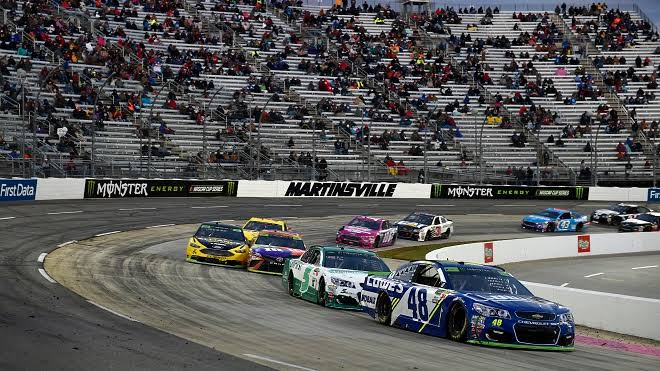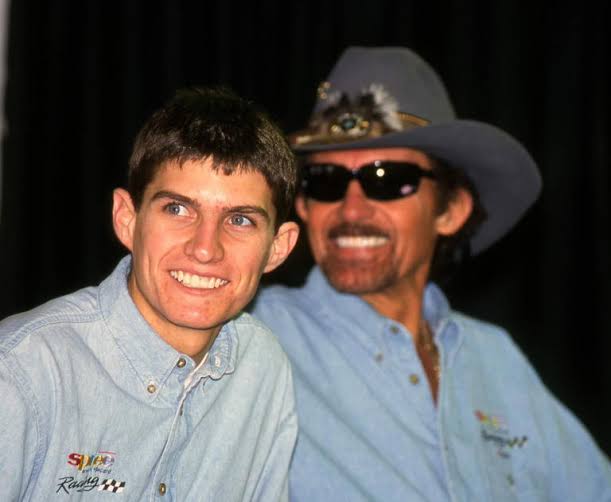Chase Elliott, a driver synonymous with success and fanfare, is navigating one of the most challenging seasons of his NASCAR career. As the sport continues to evolve, Elliott’s performances on the track have not met the lofty expectations placed upon him. While his skill and determination are undeniable, the results have been less than stellar, and many are left questioning what has gone wrong. Recently, a respected NASCAR legend shed light on a possible reason for Elliott’s struggles, pointing to the Next Gen car as a significant factor. The comparison to his teammate, Kyle Larson, only deepens the intrigue around Elliott’s situation.
The introduction of the Next Gen car was meant to level the playing field, promoting more competitive racing and giving smaller teams a shot at victory. However, as with any major change, not all drivers have adjusted seamlessly. Elliott, who has built his career on consistency and high-level performance, appears to be one of the drivers most affected by the transition. The NASCAR legend, whose voice carries weight in the industry, believes that the unique characteristics of the Next Gen car have played a central role in Elliott’s recent difficulties.
At its core, the Next Gen car is a radically different machine from what NASCAR drivers were used to in previous seasons. It features independent rear suspension, a new aerodynamic package, and an increased focus on road course capabilities. While these changes were meant to modernize the sport, they’ve also introduced a new learning curve for drivers. For Elliott, whose aggressive driving style relies heavily on precise control and car balance, the new dynamics have presented significant challenges.
Elliott’s struggles with the Next Gen car become more evident when compared to his teammate, Kyle Larson. Larson, who has proven to be one of the most versatile drivers in NASCAR, has adapted to the new car with remarkable ease. His ability to transition smoothly from one racing format to another has been a hallmark of his career, and it’s clear that the Next Gen car suits his adaptable style. Where Elliott has struggled, Larson has thrived, securing solid finishes and continuing to be a contender for wins.
This contrast between the two Hendrick Motorsports drivers has not gone unnoticed by fans and analysts alike. The NASCAR legend pointed out that while Elliott’s approach to racing has historically been effective, the shift in vehicle dynamics has thrown him off balance. Elliott’s driving style is rooted in his ability to control the car in tight, aggressive maneuvers. The Next Gen car, with its increased reliance on aerodynamics and handling differences, has made it more difficult for him to execute those maneuvers with the same precision.
In contrast, Larson’s style, which emphasizes adaptability and finesse, aligns well with the characteristics of the Next Gen car. Larson has always been known for his smooth, controlled driving, and that has paid dividends this season. His ability to read the car and adjust his strategy mid-race has allowed him to navigate the complexities of the Next Gen vehicle with relative ease, further widening the gap between his performance and Elliott’s.
This comparison has fueled ongoing discussions in the NASCAR community about whether Elliott’s struggles are truly a reflection of his inability to adapt or simply a byproduct of the car’s design. The NASCAR legend believes it’s a bit of both. While Elliott is undoubtedly a top-tier driver, the transition to the Next Gen car has tested his ability to modify his style in a way that drivers like Larson have been able to do more quickly.
But all hope is not lost for Elliott. The NASCAR legend pointed out that many great drivers have faced challenges when major changes occur in the sport, only to come out stronger in the end. The key for Elliott will be to work closely with his team to fine-tune the car’s setup and adjust his approach. The potential is there—he just needs to find the right balance between the car’s capabilities and his driving instincts.
What’s clear is that the Next Gen car has shaken up the dynamics of the NASCAR field, pushing drivers to evolve and adapt in ways they haven’t had to before. For Elliott, it’s a unique challenge, but also an opportunity to prove his resilience. The comparisons to Larson, while valid, should also serve as motivation for Elliott to rise to the occasion and find new ways to succeed.
As the season progresses, fans will be watching closely to see how Elliott handles the pressure. Will he adapt and overcome, or will the Next Gen car continue to be an obstacle that holds him back? The answer to that question could define not only Elliott’s season but also his legacy in the sport. One thing is certain—Chase Elliott isn’t one to back down from a challenge, and this might be the toughest one of his career yet.
NASCAR Legend Exposes Next Gen Car as Part of Chase Elliott’s Struggles, Compares Him to Kyle Larson




